Sanatan Dharma: Exploring Vedic Tradition, Dharma, and Karma
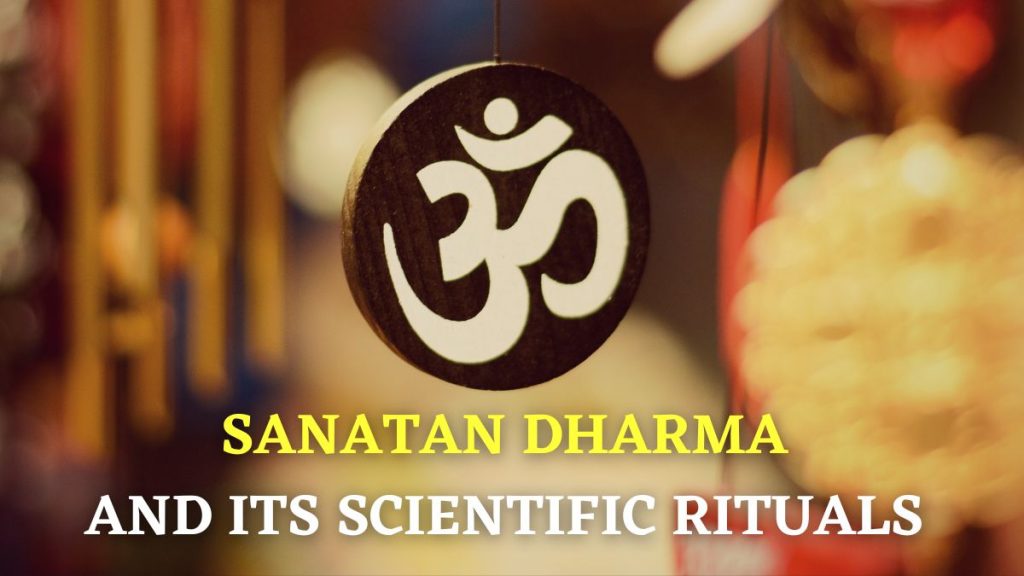
Sanatan Dharma, often referred to as Hinduism, is one of the oldest spiritual traditions in the world, with roots stretching back thousands of years in the Indian subcontinent.
At the heart of this ancient tradition lie profound concepts like Dharma and Karma, which form the cornerstone of a way of life deeply rooted in spirituality, philosophy, and ethical conduct. In this exploration, we embark on a journey into the depths of Sanatan Dharma, delving into the rich tapestry of Vedic wisdom, understanding the nuances of Dharma, and unraveling the intricacies of Karma.
Sanatan Dharma, often referred to as Hinduism, is not merely a religion but a way of life deeply rooted in the ancient wisdom of the Indian subcontinent. Its name itself, ‘Sanatana Dharma’, translates to the “Eternal Law” or the “Eternal Way”. In a world marked by constant change and flux, Sanatana Dharma stands as a beacon of timeless principles and values that guide individuals towards spiritual fulfillment, harmony with nature, and self-realization.
Origins and Philosophy
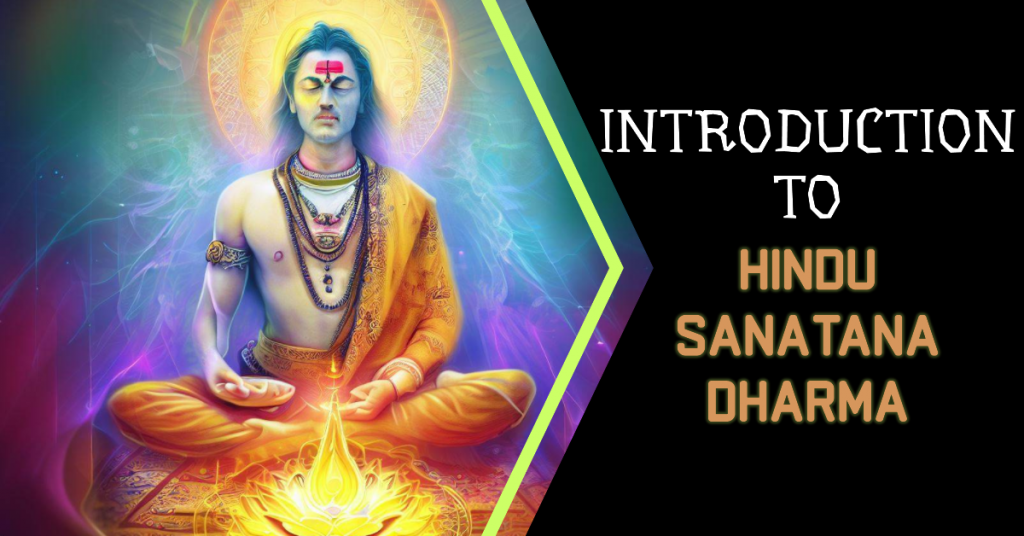
Sanatana Dharma traces its origins to the Vedas, the ancient scriptures dating back thousands of years. These sacred texts are not only repositories of spiritual knowledge but also encompass a vast array of subjects including philosophy, science, astronomy, and ethics.
At the heart of Sanatan Dharma lies the concept of Dharma, which encapsulates the moral and ethical duties that govern one’s conduct in life. Dharma emphasizes the importance of righteousness, duty, and moral responsibility, guiding individuals towards living a life of virtue and integrity.
Central to the philosophy of Sanatana Dharma is the belief in the eternal cycle of birth, death, and rebirth, known as samsara, governed by the law of karma. According to this doctrine, the actions of an individual have consequences that transcend their current lifetime, shaping their future incarnations.
This understanding underscores the significance of leading a life of moral conduct and spiritual evolution, ultimately seeking liberation from the cycle of samsara, known as moksha.
Core Principles and Practices in Sanatana Dharma

Sanatan Dharma encompasses a diverse array of beliefs, practices, and rituals, reflecting the rich tapestry of Indian culture and heritage. At its core, however, are certain fundamental principles that form the bedrock of Hindu philosophy:
Brahman: The concept of Brahman represents the ultimate reality, the unchanging, infinite, and eternal source from which all existence emanates. Brahman is immanent in the universe, pervading every aspect of creation, yet transcending it at the same time.
Atman: Atman refers to the individual soul or self, which is believed to be inherently divine and eternal. The realization of Atman as identical to Brahman lies at the heart of spiritual enlightenment, leading to the dissolution of the ego and the attainment of self-realization.
Dharma: As mentioned earlier, Dharma constitutes the moral and ethical duties prescribed for individuals based on their social roles, station in life, and stage of spiritual evolution. Upholding Dharma fosters social harmony, righteousness, and the well-being of all beings.
Karma: Karma denotes the law of cause and effect, wherein every action, thought, and intention generates consequences that shape one’s destiny. By acting selflessly and in accordance with Dharma, individuals accumulate positive karma, leading them towards spiritual growth and eventual liberation.
Moksha: Moksha represents the ultimate goal of human existence, signifying liberation from the cycle of birth and death. It entails transcending the limitations of the ego and realizing one’s essential unity with Brahman, thereby attaining eternal bliss and freedom from suffering.
Spiritual Practices and Paths

Sanatana Dharma encompasses a diverse array of spiritual practices and paths, catering to the varied temperaments and inclinations of individuals. These paths, known as yogas, offer systematic methodologies for achieving spiritual realization and union with the divine. Some of the prominent yogas include:
Jnana Yoga: Jnana Yoga is the path of knowledge and wisdom, emphasizing the intellectual inquiry into the nature of reality and the self. It involves the study of scriptures, contemplation, and self-inquiry, leading to the direct realization of one’s true nature as Brahman.
Bhakti Yoga: Bhakti Yoga is the path of devotion and love, wherein devotees cultivate a deep, heartfelt relationship with the divine through prayer, worship, and devotional practices. It emphasizes surrendering to the will of the divine and experiencing a profound sense of love and connection.
Karma Yoga: Karma Yoga is the path of selfless action, wherein individuals perform their duties and responsibilities without attachment to the fruits of their actions. By dedicating their actions to the divine and serving others with humility and compassion, practitioners purify their hearts and minds, ultimately leading to spiritual growth.
Raja Yoga: Raja Yoga, also known as the royal path, encompasses the practices of meditation, concentration, and mental discipline. Through techniques such as asanas (postures), pranayama (breath control), and dhyana (meditation), practitioners attain mastery over the mind and awaken the dormant spiritual potentials within.
Kundalini Yoga: Kundalini Yoga focuses on the awakening of the dormant spiritual energy known as Kundalini, which lies coiled at the base of the spine. Through various techniques such as breathwork, mantra, and meditation, practitioners activate and channel this energy upwards, leading to spiritual transformation and enlightenment.
The Vedic Tradition
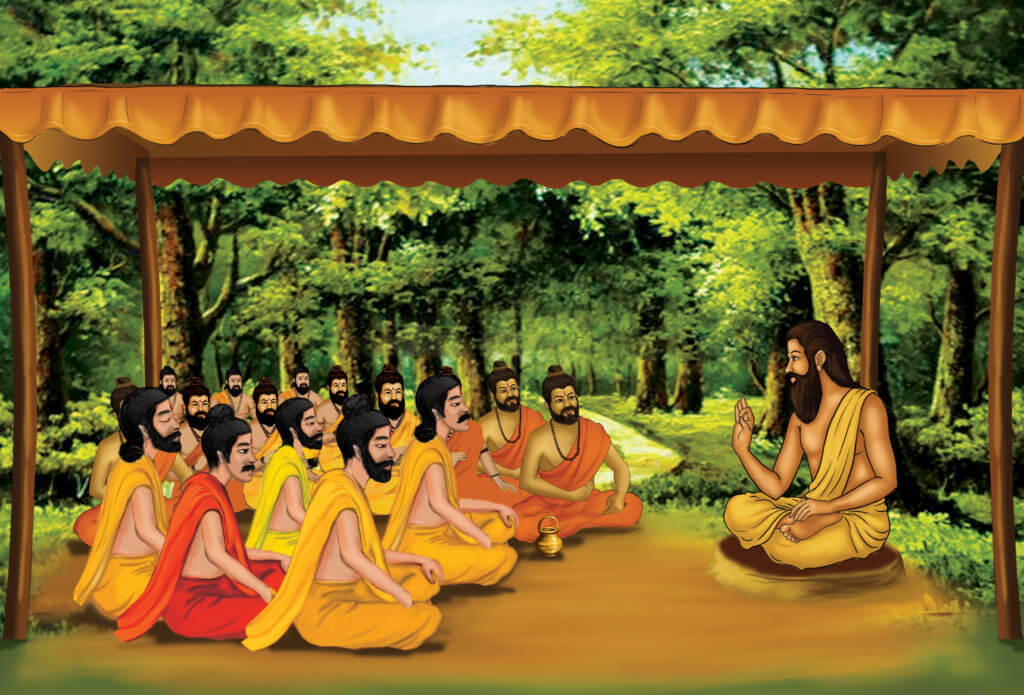
The Vedic tradition forms the bedrock of Sanatana Dharma, encompassing a vast body of sacred texts known as the Vedas. These scriptures, believed to be revealed to ancient sages through divine revelation, provide profound insights into the nature of existence, the cosmos, and the ultimate reality (Brahman). The Vedas are composed of four primary texts: the Rigveda, Samaveda, Yajurveda, and Atharvaveda, each serving unique purposes ranging from hymns and rituals to spiritual knowledge and mystical insights.
Central to the Vedic tradition is the concept of Brahman, the supreme, formless, and eternal reality that underlies the entire universe. Brahman is described as Sat-Chit-Ananda, representing existence, consciousness, and bliss. The pursuit of realizing one’s identity with Brahman, known as Moksha or liberation, is considered the ultimate goal of life in Sanatan Dharma.
Dharma: The Cosmic Order
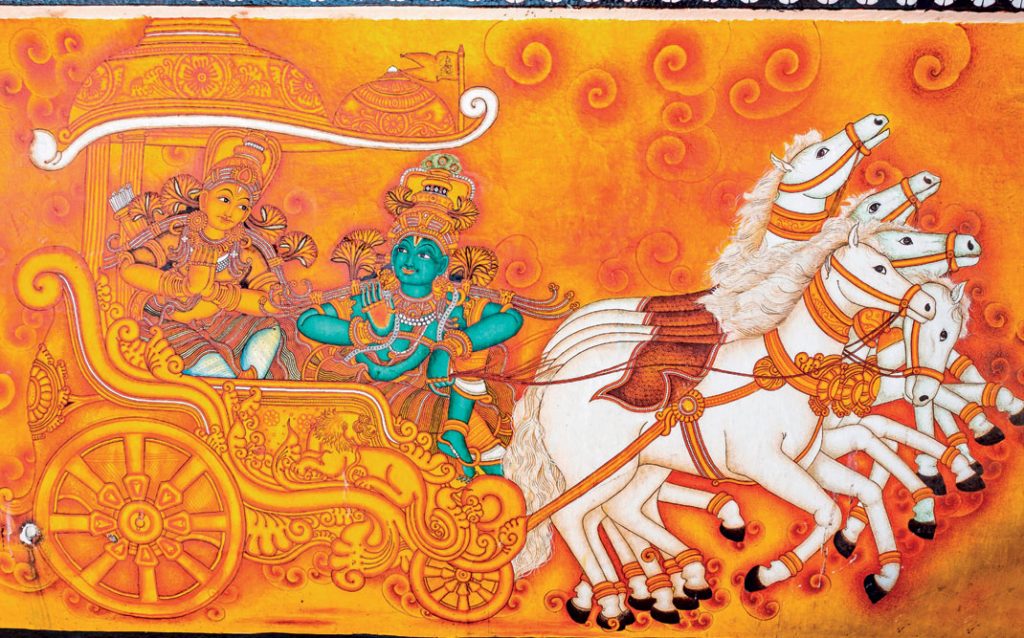
Dharma, a fundamental concept in Hindu philosophy, embodies the cosmic order that sustains and harmonizes the universe. Derived from the Sanskrit root ‘dhr,’ meaning to uphold or support, Dharma encompasses righteousness, duty, law, morality, and ethical conduct. It serves as the guiding principle that governs not only human behavior but the entire cosmos.
Dharma manifests in various forms, including individual, societal, and cosmic levels. At the individual level, it refers to one’s duty and responsibilities according to their role in society, known as Svadharma. For instance, a person’s dharma as a student differs from that of a parent or a teacher. Fulfilling one’s Svadharma with sincerity and integrity is believed to contribute to personal growth and spiritual evolution.
On a societal level, Dharma regulates social order and harmony by prescribing ethical standards and moral values. It encompasses principles such as compassion, honesty, justice, and respect for all life forms. The ancient texts, particularly the Manusmriti and the Bhagavad Gita, expound upon the duties and responsibilities of individuals belonging to different varnas (castes) and ashramas (stages of life).
Furthermore, Dharma extends beyond human interactions to include ecological balance and the harmonious coexistence of all beings in the cosmos. Recognizing the interconnectedness of all life forms, adherents of Sanatana Dharma emphasize environmental stewardship and reverence for nature as integral aspects of their Dharma.
Karma: The Law of Cause and Effect

Karma, another foundational concept in Sanatan Dharma, elucidates the law of cause and effect governing human actions and their consequences. Derived from the Sanskrit root ‘kri,’ meaning to do or act, Karma denotes the accumulated sum of one’s deeds, thoughts, and intentions that shape their present circumstances and future destiny.
According to the doctrine of Karma, every action generates a corresponding reaction, creating a chain of cause and effect that binds individuals to the cycle of birth and rebirth (samsara). Positive actions lead to beneficial outcomes (punya), while negative actions result in adverse consequences (papa). The Bhagavad Gita elucidates this principle, stating, “As you sow, so shall you reap.”
Karma operates at multiple levels, including physical, mental, and spiritual realms. While some Karma yields immediate results, others may manifest in future lifetimes, highlighting the continuity of the soul’s journey through successive incarnations (reincarnation). Through the law of Karma, individuals are accountable for their choices and actions, shaping their destiny and evolution across lifetimes.
However, Karma is not merely deterministic but also subject to the influence of free will, intention, and consciousness. By cultivating self-awareness, discernment, and ethical conduct, individuals can mitigate negative Karma, transcend cyclical patterns, and attain spiritual liberation (Moksha).
Integration of Dharma and Karma:

Dharma and Karma are deeply intertwined, forming a symbiotic relationship that guides ethical conduct and spiritual growth. Dharma provides the moral framework and guidelines for righteous action, while Karma serves as the mechanism through which the consequences of those actions unfold.
Living in accordance with Dharma entails upholding moral values, fulfilling one’s duties, and contributing positively to society while minimizing harm to others and the environment. By aligning with Dharma, individuals cultivate positive Karma and create conducive conditions for their spiritual evolution and ultimate liberation.
Conversely, violating Dharma through unethical behavior and self-serving actions generates negative Karma, perpetuating the cycle of suffering and bondage. Therefore, adherents of Sanatana Dharma strive to adhere to righteous conduct and virtuous living, mindful of the karmic repercussions of their choices.
Practical Application in Daily Life

The principles of Dharma and Karma find practical application in various aspects of daily life, guiding individuals in navigating moral dilemmas, making ethical decisions, and fostering personal growth.
In interpersonal relationships, Dharma emphasizes compassion, empathy, and respect for others’ rights and dignity. By practicing ahimsa (non-violence) and satya (truthfulness), individuals cultivate harmonious relationships based on mutual trust and understanding.
In professional and academic pursuits, adherence to Dharma entails integrity, diligence, and excellence in one’s work, irrespective of external rewards or recognition. By performing one’s duties with sincerity and dedication, individuals contribute to the welfare of society and uphold the principles of social responsibility.
In environmental stewardship, Dharma calls for reverence for nature, sustainable living, and ecological conservation. By adopting eco-friendly practices, reducing consumption, and promoting environmental awareness, individuals honor their interconnectedness with the natural world and mitigate negative karmic consequences.
Sanatan Dharma offers profound insights into the nature of existence, ethical conduct, and spiritual evolution through its exploration of concepts like Dharma and Karma. Rooted in the wisdom of the Vedic tradition, Dharma serves as the moral compass that guides individuals in righteous living, while Karma elucidates the law of cause and effect that governs the consequences of their actions.
By integrating the principles of Dharma and Karma into their daily lives, individuals can cultivate virtues, foster personal growth, and contribute to the collective welfare of society. In essence, the journey of self-discovery and spiritual realization in Sanatana Dharma is a transformative path towards aligning with the cosmic order and attaining ultimate liberation from the cycle of birth and death.
Social and Cultural Aspects
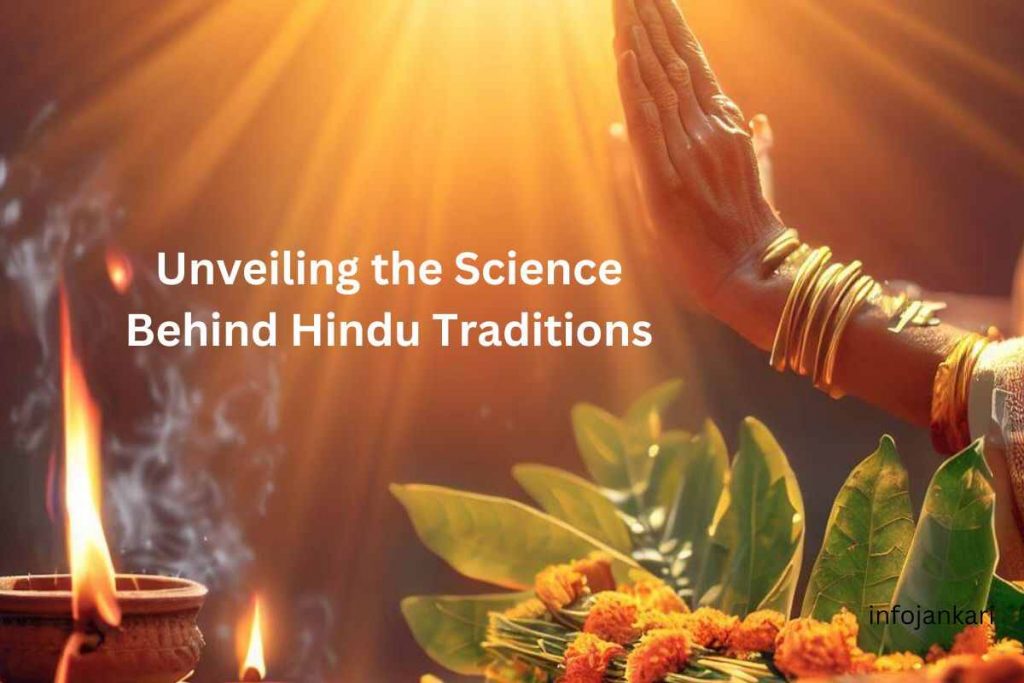
Sanatana Dharma encompasses not only spiritual teachings but also social and cultural practices that are deeply intertwined with its philosophical principles. Hindu society is traditionally organized into four varnas or social classes, namely Brahmins (priests and scholars), Kshatriyas (warriors and rulers), Vaishyas (merchants and farmers), and Shudras (laborers and service providers).
Each varna is assigned specific duties and responsibilities based on their innate qualities and aptitudes, forming the basis of a hierarchical social order known as varnashrama dharma.
Furthermore, Sanatan Dharma recognizes the concept of ashramas or stages of life, which delineate the different phases of an individual’s spiritual journey. These ashramas include Brahmacharya (student life), Grihastha (householder life), Vanaprastha (retired life), and Sannyasa (renunciate life), each emphasizing specific duties and obligations suited to the respective stage.
Rituals, festivals, and ceremonies also play a significant role in Hindu culture, serving as occasions for worship, celebration, and community bonding. From elaborate temple rituals to colorful festivals such as Diwali, Holi, and Navaratri, these traditions serve to honor the divine, commemorate mythological events, and foster a sense of unity and belonging among devotees.
Challenges and Contemporary Relevance
While Sanatana Dharma has endured for millennia, it faces various challenges in the modern era, including cultural appropriation, misconceptions, and social-political tensions. The globalization and secularization of society have led to the dilution of traditional values and practices, posing challenges to the preservation and transmission of Hindu heritage.
Moreover, the rise of religious fundamentalism and communalism has exacerbated interfaith tensions and conflicts, undermining the ethos of pluralism and tolerance inherent in Sanatan Dharma. It is imperative for adherents and proponents of Hinduism to address these challenges by fostering dialogue, promoting education, and upholding the timeless values of compassion, tolerance, and inclusivity.
Despite these challenges, Sanatana Dharma remains profoundly relevant in the contemporary world, offering timeless wisdom and spiritual insights that resonate with seekers of truth across cultures and civilizations. Its emphasis on universal principles such as compassion, ahimsa (non-violence), and the interconnectedness of all life holds the key to addressing the pressing challenges facing humanity today, including environmental degradation, social injustice, and existential angst.
Sanatan Dharma stands as a beacon of eternal wisdom, guiding humanity towards spiritual fulfillment, ethical living, and harmonious coexistence. Its timeless teachings and practices offer a profound roadmap for navigating the complexities of life and realizing the ultimate goal of self-realization and liberation.
As we traverse the ever-changing landscape of the modern world, let us draw inspiration from the timeless teachings of Sanatana Dharma and strive to embody its lofty ideals of truth, righteousness, and universal love. In doing so, we can pave the way for a more enlightened and compassionate world for generations to come.